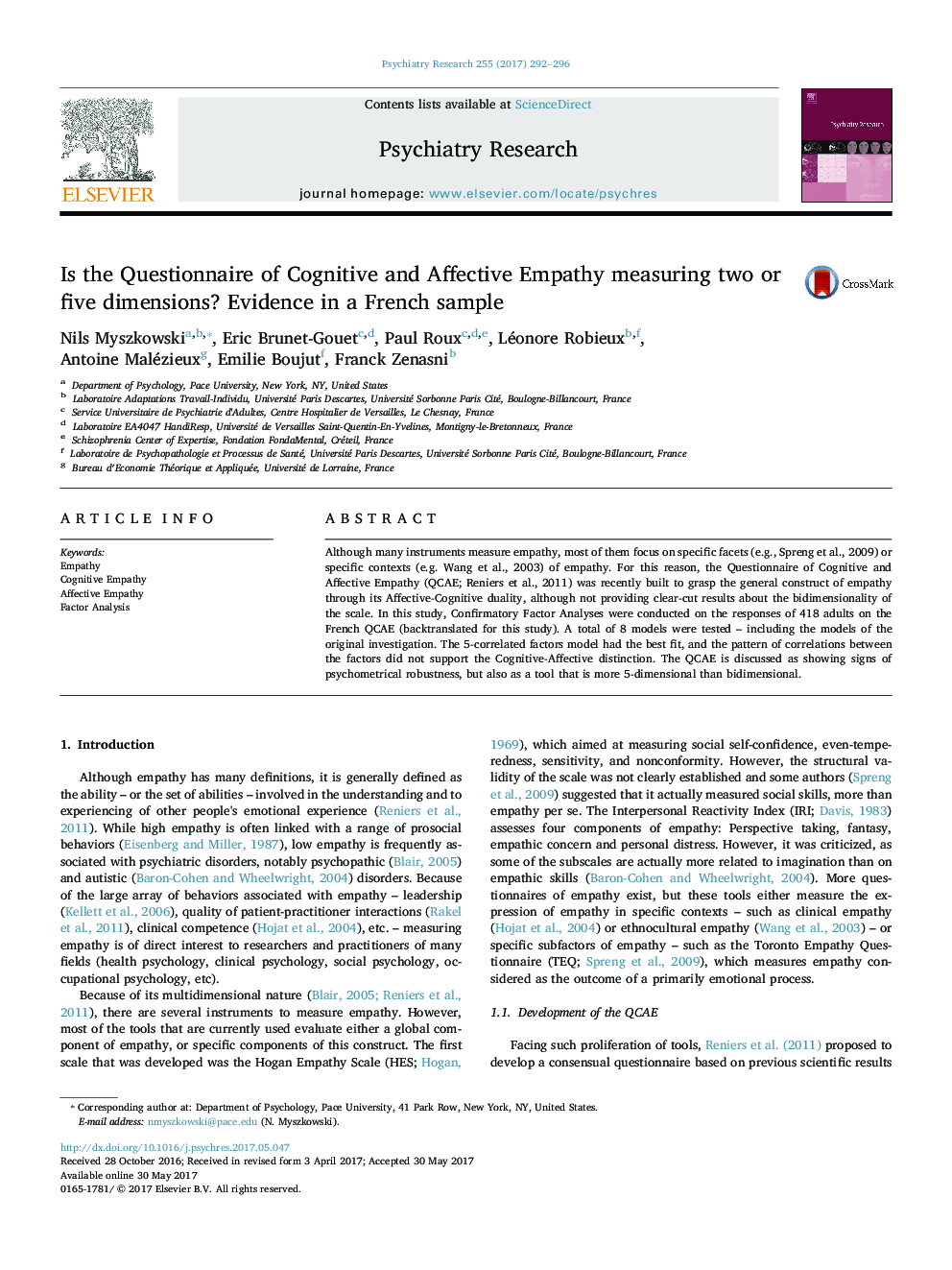| Article ID | Journal | Published Year | Pages | File Type |
|---|---|---|---|---|
| 4933207 | Psychiatry Research | 2017 | 5 Pages |
Abstract
Although many instruments measure empathy, most of them focus on specific facets (e.g., Spreng et al., 2009) or specific contexts (e.g. Wang et al., 2003) of empathy. For this reason, the Questionnaire of Cognitive and Affective Empathy (QCAE; Reniers et al., 2011) was recently built to grasp the general construct of empathy through its Affective-Cognitive duality, although not providing clear-cut results about the bidimensionality of the scale. In this study, Confirmatory Factor Analyses were conducted on the responses of 418 adults on the French QCAE (backtranslated for this study). A total of 8 models were tested - including the models of the original investigation. The 5-correlated factors model had the best fit, and the pattern of correlations between the factors did not support the Cognitive-Affective distinction. The QCAE is discussed as showing signs of psychometrical robustness, but also as a tool that is more 5-dimensional than bidimensional.
Related Topics
Life Sciences
Neuroscience
Biological Psychiatry
Authors
Nils Myszkowski, Eric Brunet-Gouet, Paul Roux, Léonore Robieux, Antoine Malézieux, Emilie Boujut, Franck Zenasni,
